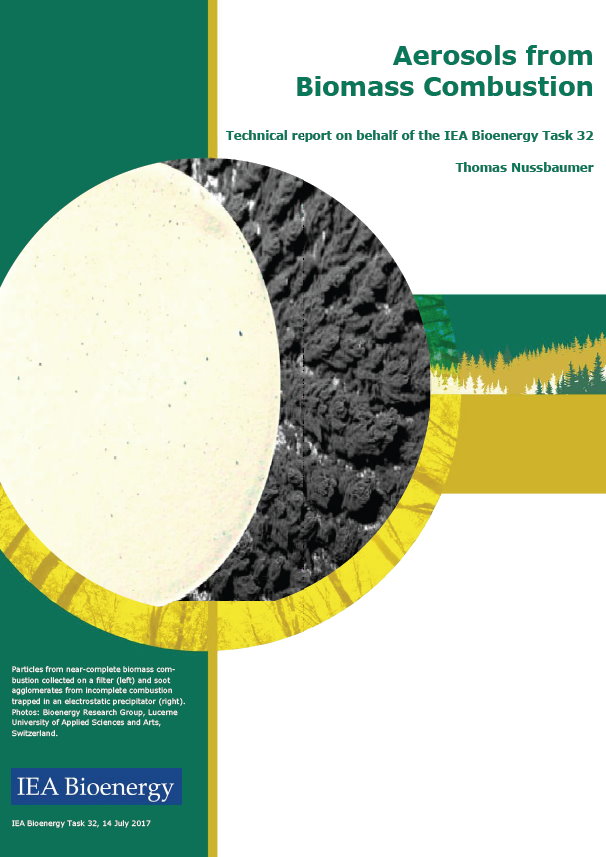Report on health aspects of biomass combustion particles
 Task 32 publised a report on the health aspects of biomass combustion originated particles. The report assesses the typical quantity and composition of aerosols emitted from biomass fired stoves and boilers, and reviews the results of recent R&D projects in which the health impacts were evaulated.
Task 32 publised a report on the health aspects of biomass combustion originated particles. The report assesses the typical quantity and composition of aerosols emitted from biomass fired stoves and boilers, and reviews the results of recent R&D projects in which the health impacts were evaulated.
This report summarises the current knowledge on the health relevance of combustion generated PM, describes the mechanisms which can cause PM in biomass combustion, describes different particle types, and provides information on measures to reduce PM from biomass combustion. It is important to distinguish carbonaceous and inorganic pollutants as well as primary and secondary aerosols. Organic pollutants are particularly relevant to residential biomass combustion and can be avoided at near-complete combustion conditions. Particles resulting from incomplete combustion in manual devices exhibit a high cytotoxicity, while particles from properly operated automated biomass boilers and furnaces are mainly inorganic (derived from ash constituents in the biomass) and exhibit significantly lower or even undetectable cytotoxicity. In addition, inorganic particles can be removed effectively by air pollution control equipment such as electrostatic precipitators or fabric filters. In summary, biomass can play an important role in future energy supply in an environmentally friendly manner through implementation of state-of-the-art combustion devices and their appropriate operation.
Aerosols from biomass combustion – Technical report, Thomas Nussbaumer, IEA Bioenergy Task 32, 2017


